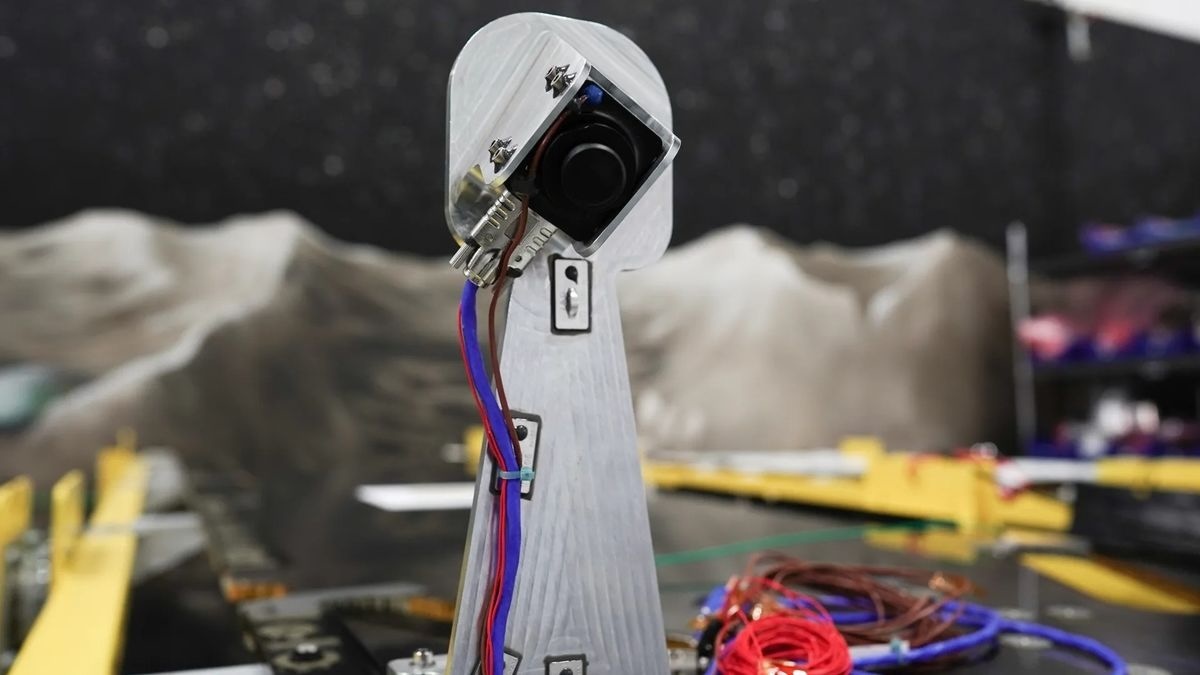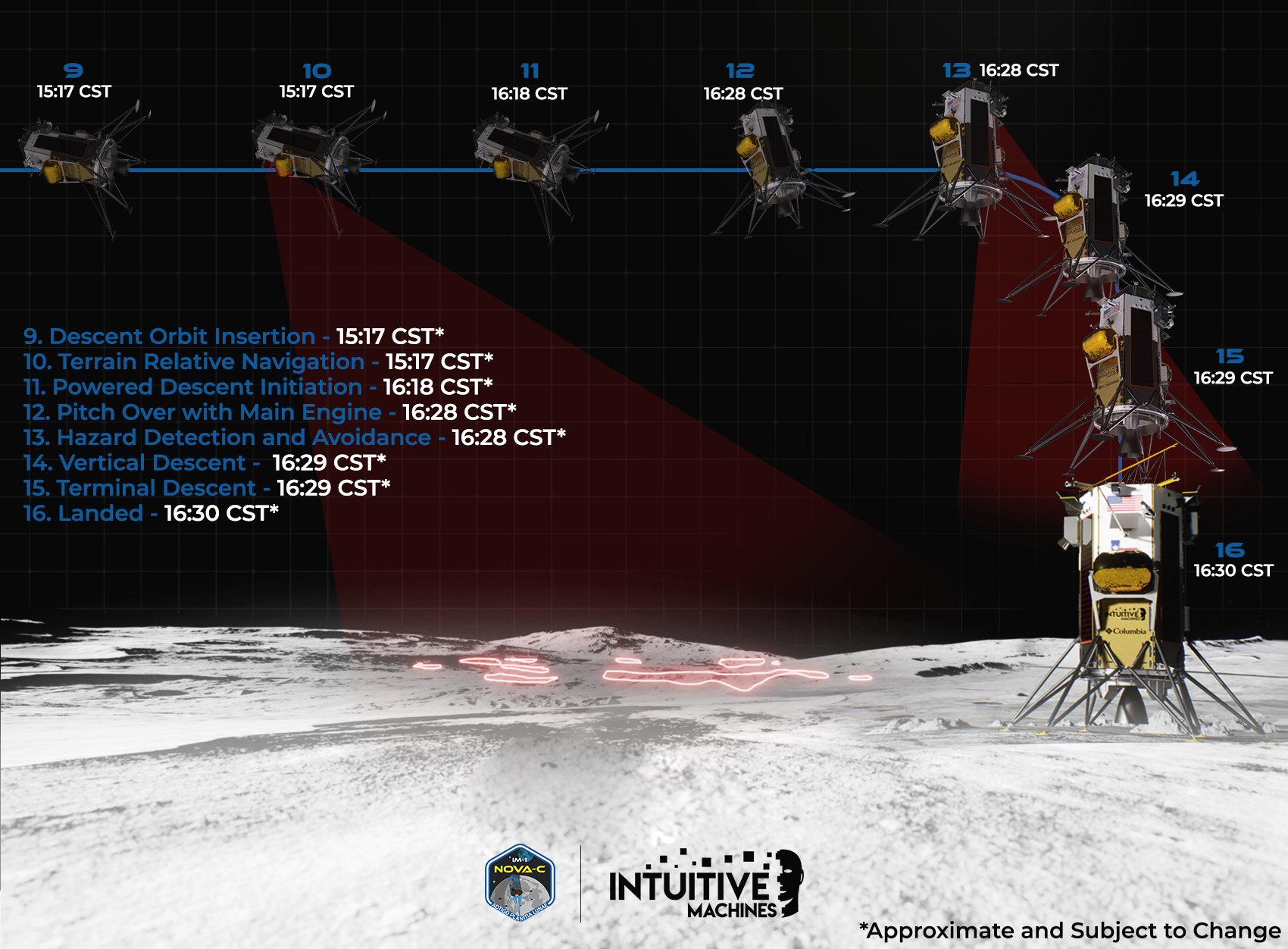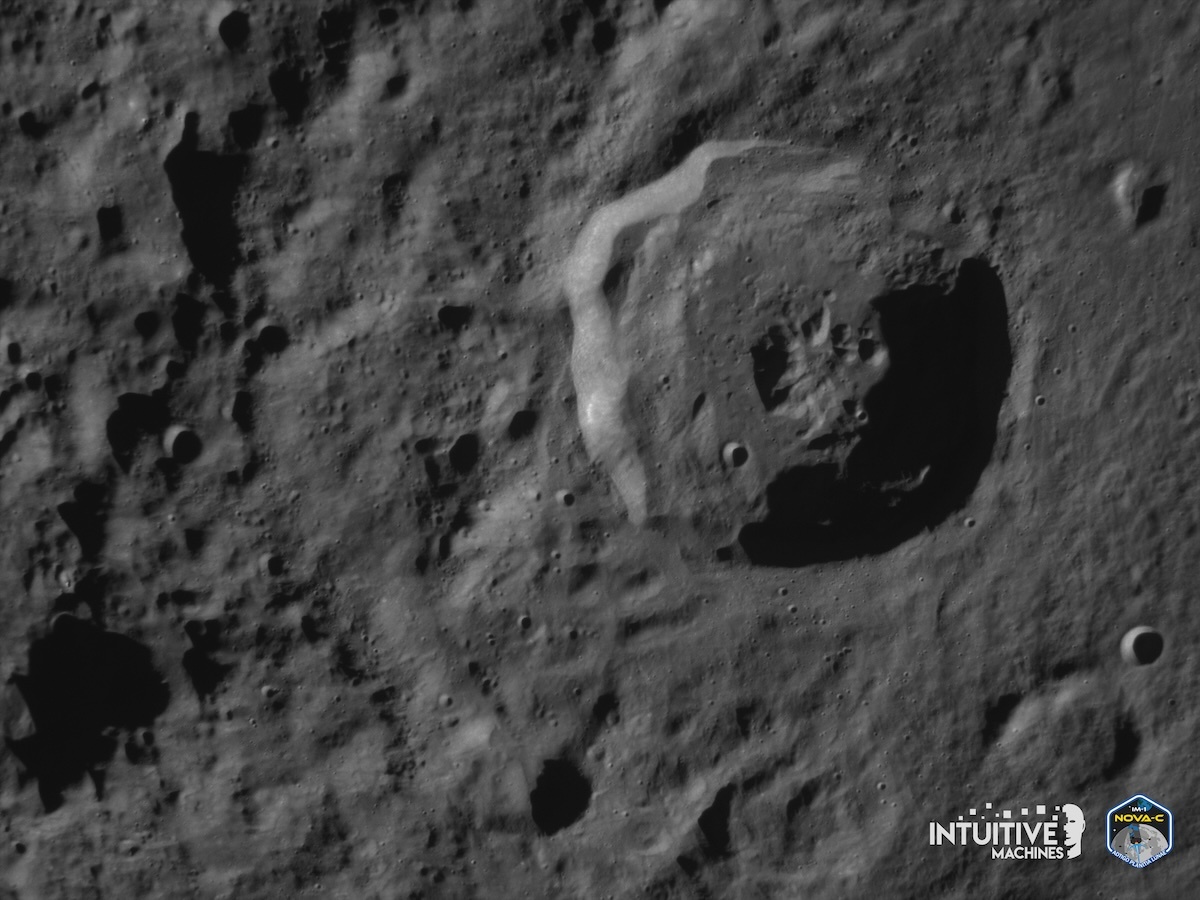17.02.2024
Intuitive Machines Transmits First IM-1 Mission Images In Space
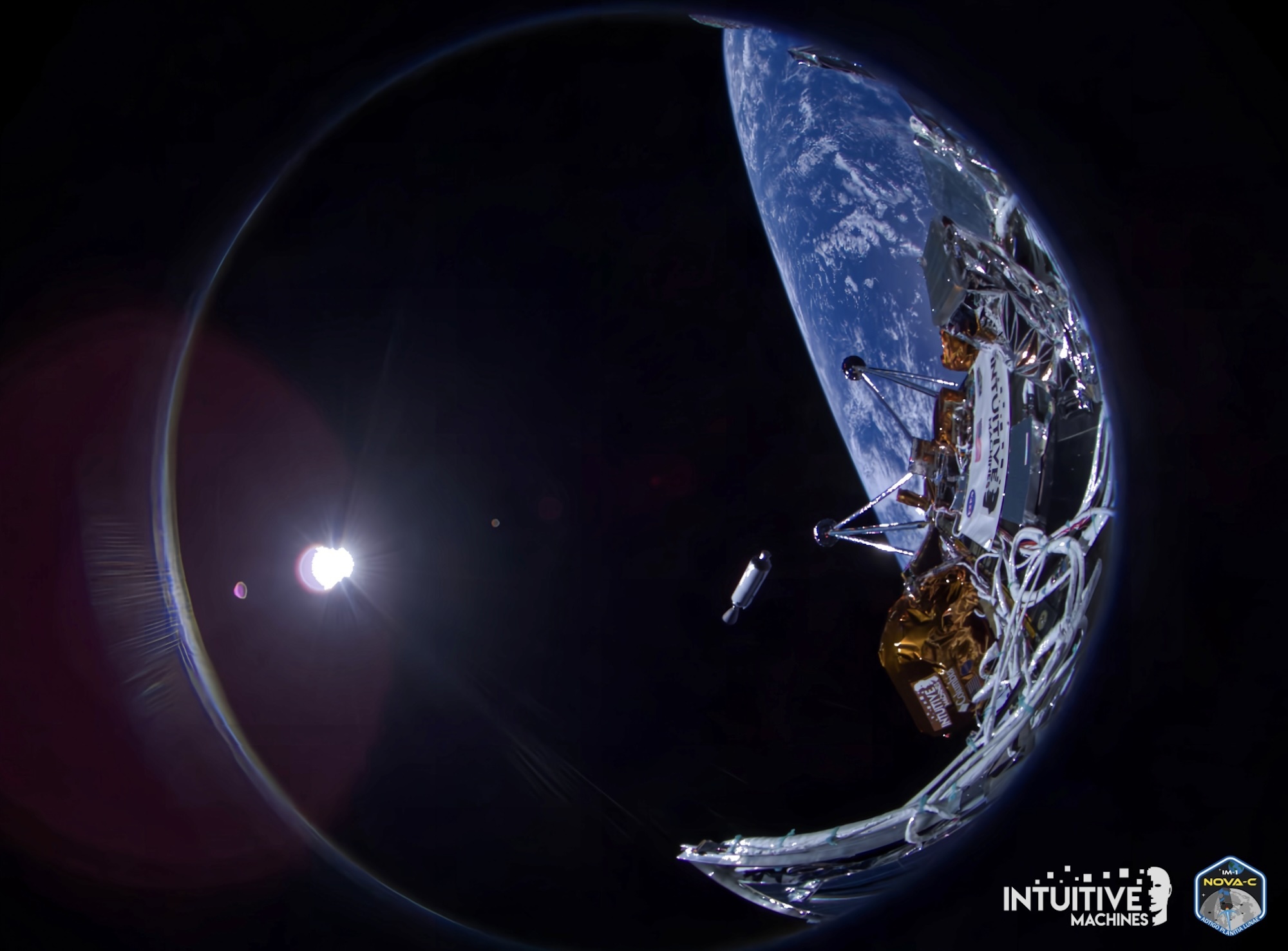

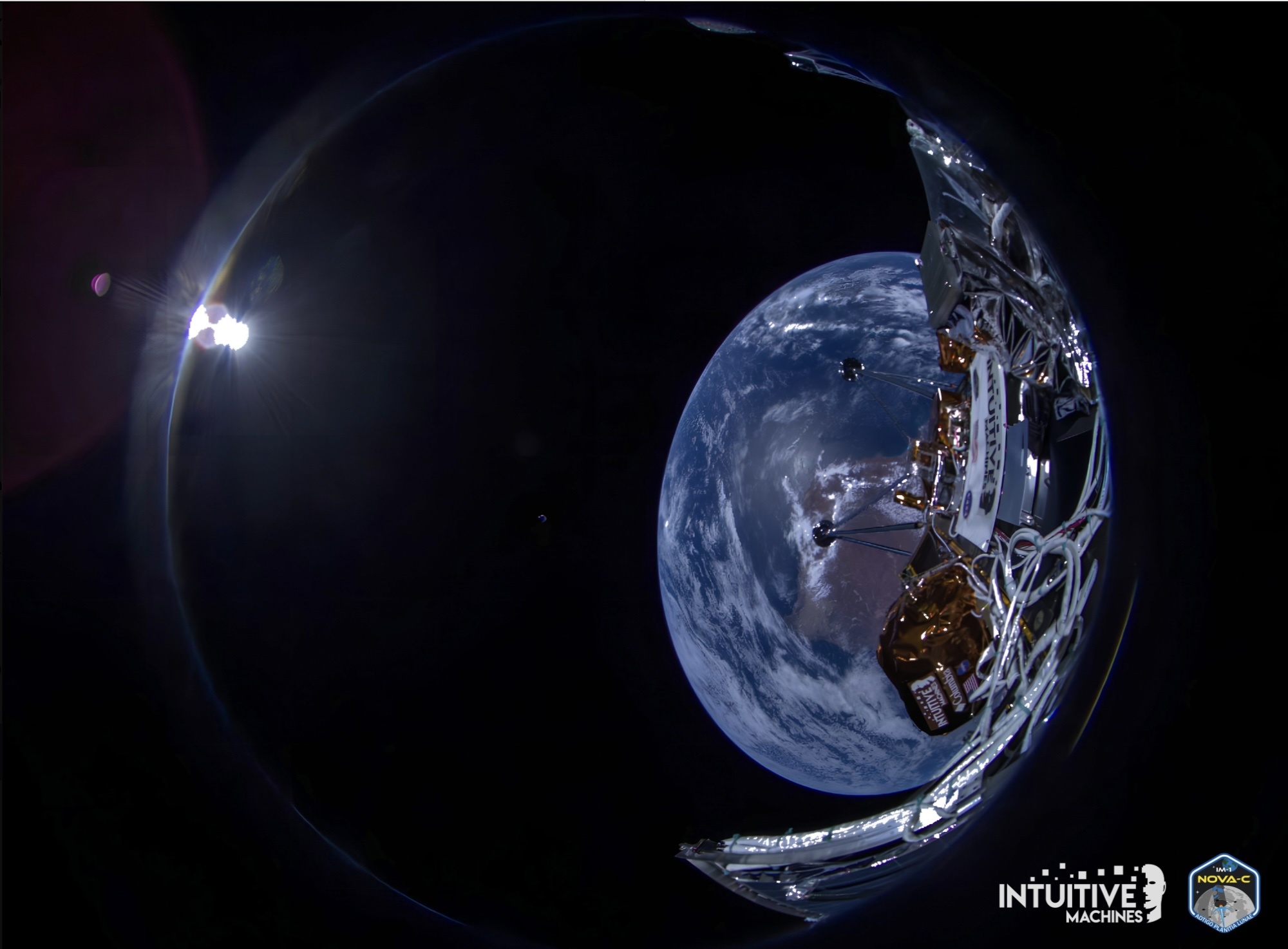
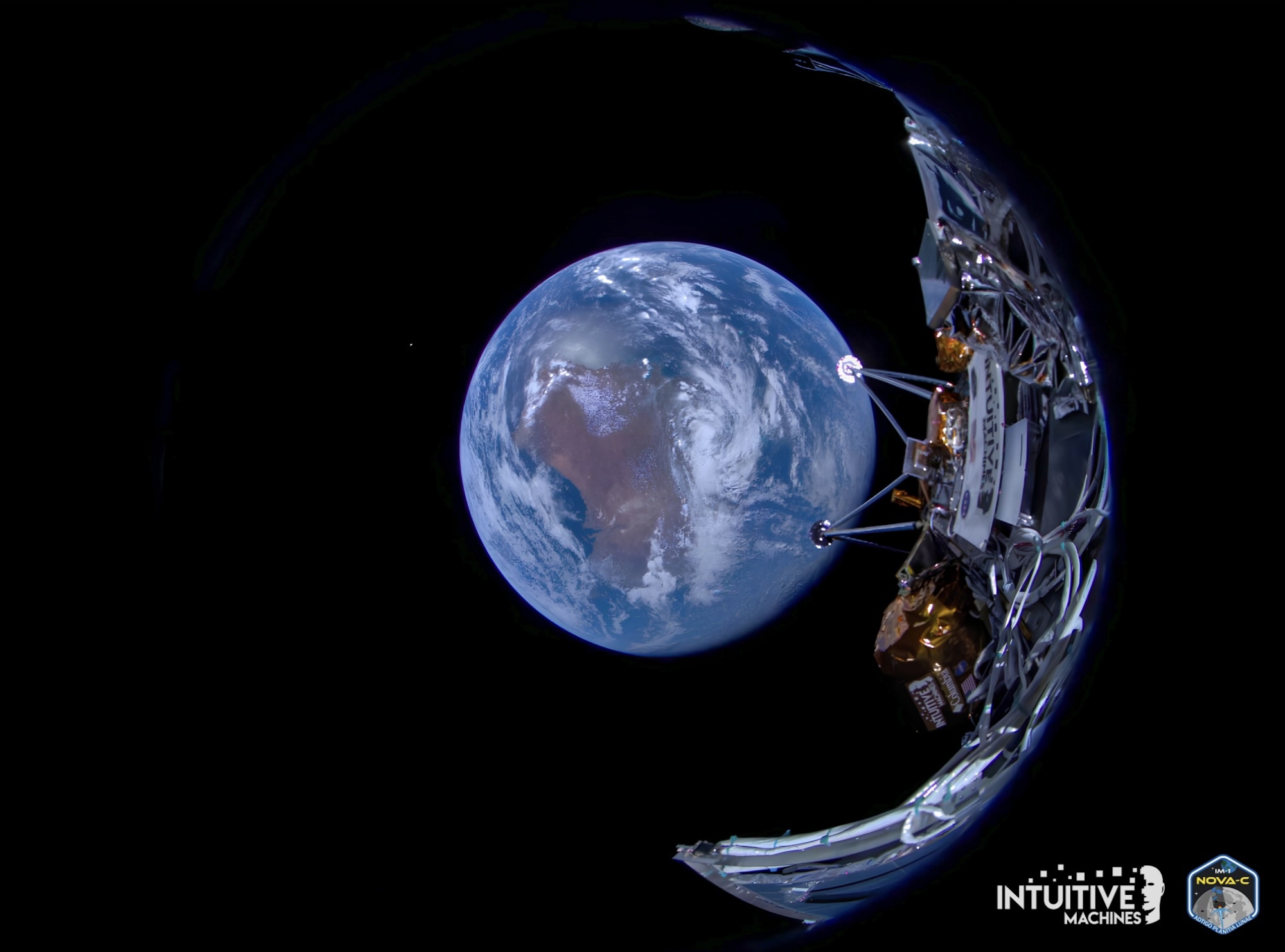
The IM-1 mission Nova-C class lunar lander continues to be in excellent health, and we are preparing for our engine commissioning maneuver.
Following nominal launch vehicle separation, the spacecraft autonomously brought up all sensors and radios. Odysseus listened to the Inertial Measurement Unit to determine attitude rates and activated the Reaction Control System to nullify those attitude rates as designed.
Earlier today, Nova-C’s navigation system rejected star tracker data, but a patch has been sent to the spacecraft, and the star tracker updates have resumed nominal operations.
Initially, the star tracker information was numerically conditioned slightly differently than we anticipated. We were expecting a one-in-a-thousand numerical tolerance and received a number more like two and three in a thousand. So, Nova-C’s navigation system rejected the star tracker data.
When we tested this system terrestrially, they were within tolerance, but we experienced slightly different numerical conditioning in flight.
The vehicle had a very low rate of rotation, approximately .15 degrees per second, mostly around the long axis, which caused our solar arrays and antennas to rotate in and out of the desired attitude.
We noticed that, at one point, we passed through Nova-C’s max power attitude, and we recorded the artificial attitude. We then manually forced the navigation system to advance to attitude pointing and commanded the vehicle to go to the maximum power attitude we observed.
This put Nova-C into a power-positive configuration and fully charged Nova-C’s batteries. With the diagnostic data we collected, we identified a patch to align the numerical conditioning of the star tracker data with our navigation system’s acceptance test. We tested the patch on the ground, sent it to the spacecraft, restarted the star tracker, and immediately began processing star tracker updates – resuming nominal operations.
Again, the IM-1 mission Nova-C class lunar lander is in excellent health, and we are preparing for Odysseus’ commissioning maneuver.
IM-1 Makes History by Igniting Cryogenic Engine in Deep Space
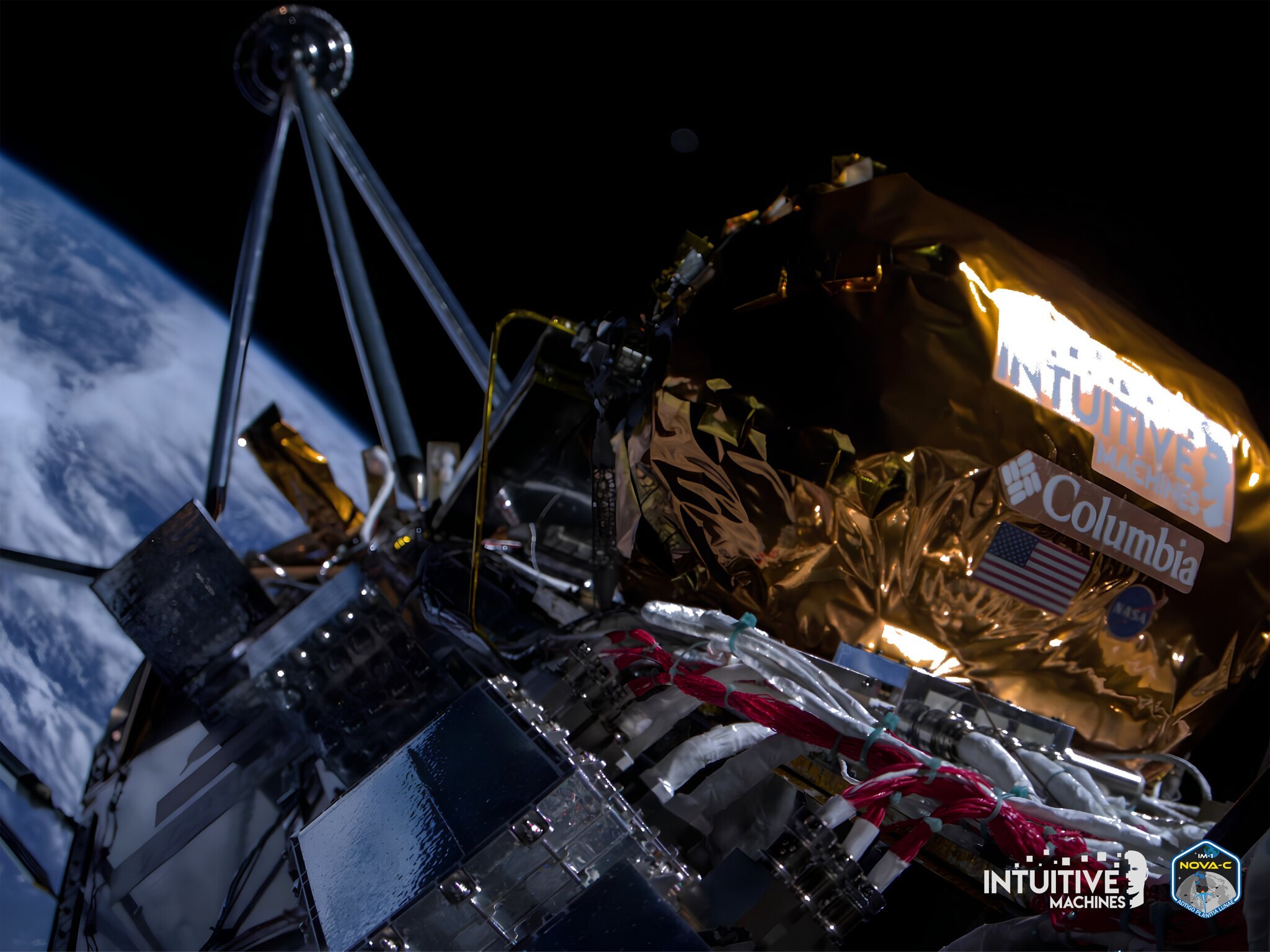
Several key features of the IM-1 Odysseus lander, including wiring, a landing leg, and a helium tank wrapped in Columbia Sportswear’s insulation, are captured by an engineering camera. Credit: Intuitive Machines.
Two and a half days after its launch, Intutive Machines’ IM-1 mission is making steady progress towards its lunar landing attempt. The company’s Nova-C lander, named Odysseus, fired its main engine for the first time early in the morning of February 17th. Odysseus’ debut has not been without its challenges, as the team initially had to grapple with multiple control issues. However, following the long-duration commissioning burn of its main engine, the mission appears to be on track.
While IM-1’s most noteworthy moment will be its attempt to land on the Moon, Odysseus has already claimed a historic milestone. It was the first spacecraft to fire a rocket engine powered by liquid oxygen and liquid methane in deep space. This is not just a curiosity; the long-term storage of liquid of cryogenic propellants is an enabling capability for the Artemis program. Intuitive Machines and its primary customer, NASA, are now preparing for lunar orbit insertion and the subsequent landing attempt.
Two days ago, IM-1 lifted off from Launch Complex 39A at the Kennedy Space Center atop a SpaceX Falcon 9 rocket. The rocket performed nominally during its early-morning climb to orbit, and Odysseus separated from the second stage 48 minutes after its launch. The distant Moon formed a symbolic backdrop for the spacecraft as it drifted away from the second stage of its launch vehicle to begin its journey through cislunar space. Over the subsequent hours, Odysseus photographed the Falcon 9 second stage receding into the distance; this image was followed by a breathtaking photograph of the full disk of the Earth with Australia clearly visible.
Following its separation, Odysseus’ first task was to autonomously determine its attitude, or orientation in space. It would then pirouette and point its solar array towards the Sun. At this point, the mission encountered its first anomaly. Prior to flight, any star tracker is numerically conditioned to measure expected stellar brightness values and export them to the spacecraft’s computer for processing. However, Odysseus’ star trackers were not nearly as accurate as expected. While the errors were minor (2-3 out of a thousand), they still led the spacecraft to autonomously reject the data.
As a result, Odysseus entered a slow tumble around its long axis, and it was unable to point its solar array towards the Sun or point its high-gain antenna towards Earth. With power decreasing, the Intuitive Machines team was able to rectify the situation by measuring which orientation provided maximum power to the lander. They then commanded Odysseus to point in this direction, which enabled it to charge its batteries while the team updated its software to accept the star tracker data.
The Intuitive Machines team includes a large number of former NASA engineers, and their response to IM-1’s early star tracker woes exemplified their ingenuity and their ability to resolve anomalies in flight. Due to these early issues, they needed to rearrange their flight plan. Odysseus’ first major maneuver was slated to be a commissioning burn of its VR-900 main engine. This rocket motor is fueled by liquid oxygen and liquid hydrogen, and it was extensively tested on Earth prior to the mission. However, it was never fired in a vacuum on the ground, so the first in-flight use of the engine was a pivotal moment for Intuitive Machines. Prior to the flight, CEO Steve Altemus remarked, “(The commissioning burn) is a critical maneuver, and if we make that maneuver go well, we are on our way to the Moon. I think our confidence level goes from 75 to 80 to about 90% once that commissioning maneuver is done.”
The commissioning burn was originally slated to take place 18 hours after launch. However, it was delayed to the second day of the mission following the issue with the star trackers. Additional minor glitches produced further delays. The lander experienced sporadic communications issues, which made it difficult to monitor the health of the main engine. In addition, it took longer than anticipated to cool down Odysseus’ liquid oxygen fuel line to its required temperature of -297 degrees Fahrenehit (-183 degrees Celsius). Nova-C is the first spacecraft in history to use cryogenic propellants for a multi-day flight, let alone an interplanetary mission. It therefore represents a major advance in the state of the art for cryofluid management, which is an enabling technology for crewed missions to the Moon and Mars. However, this also implies that occasional teething issues with the propulsion system are to be expected.
The commissioning burn finally took place on February 17th. It was an unqualified success. During the maneuver, Odysseus became the first spacecraft to ignite a cryogenic rocket motor in deep space, as well as the first planetary science mission to use liquid oxygen and liquid methane propellants. The engine burned at full power for an unspecified duration, and then throttled down to simulate the final phase of a lunar landing. This capability, known as “deep throttling,” is essential for a lunar lander, and it is one of the factors which make landing on the Moon difficult. According to Intuitive Machines, Odysseus “continues to be in excellent health and in a stable orientation.”
Intuitive Machines is now preparing for the lunar orbit insertion burn, which is slated for February 21st. Unlike most small robotic lunar landers, such as Astrobotic’s Peregrine and the Japan Aerospace Exploration Agency (JAXA)’s SLIM, Odysseus is following an expedient trajectory to its destination. It will arrive six days after launch, whereas most missions spend weeks, or even months, in cruise. The difference is due to the selection of liquid oxygen and liquid methane as the propellants for Intuitive Machines’ family of Nova landers. These cryogenic fuels are more efficient and less toxic than storable hypergolic propellants. However, due to their respective boiling points of -297 and -259 degrees Fahrenheit (-183 and -162 degrees Celsius), they slowly boil off into space. Therefore, IM-1 will land quickly in order to minimize the loss of propellant.
Prior to the Lunar Orbit Insertion (LOI) maneuver, Odysseus will conduct up to three brief trajectory correction burns to fine-tune its trajectory. The Intuitive Machines flight control team will aim the lander towards a point 62 miles (100 kilometers) above the lunar surface. The LOI burn will be the longest firing of the VR-900 during the cruise phase. The LOI burn will reduce Odysseus’ velocity by 2,950 feet (900 meters) per second, placing it in a circular Low Lunar Orbit. It will complete twelve orbits before beginning its hour-long powered descent.
The IM-1 landing attempt is slated for the afternoon of Thursday, February 22nd. The Lunar Orbit Insertion maneuver will take place about 24 hours prior to touchdown; the precise timing for these two maneuvers has not been revealed to the public. If these milestones are performed successfully, Odysseus will become the first American spacecraft to land on the Moon since Apollo 17 in December of 1972.
Quelle: AS
----
Update: 21.02.2024
.
Intuitive Machines' private Odysseus moon lander on track for Feb. 22 lunar landing

